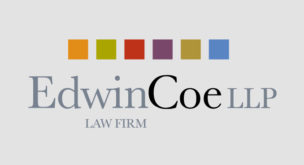Press Coverage - 17/08/2022
A step in the right direction: Commentary on the Law Commission’s proposals for digital assets’ reforms
The below article was first published in Digital Bytes, a weekly analysis from TeamBlockchain that looks at how, why and where blockchain and digital assets are being used globally.
The Law Commission has published its Consultation Paper on Digital Assets. The consultation opened on 28 July 2022 and will close on 4 November 2022. Responses to the Consultation Paper can be submitted here or by email to digitalassets@lawcommission.gov.uk.~
The Law Commission’s approach
“We should try to avoid the creation of a new legal and regulatory regime that will discourage the use of new technologies rather than provide the foundation for them to flourish.” Sir Geoffrey Vos, Master of the Rolls (speaking extra judicially).
The Law Commission’s goal is to make England and Wales “a global hub for digital assets”. At the heart of the Law Commission’s proposals is therefore an acceptance of Sir Geoffrey Vos’ words and a recognition that that the common law of England and Wales is, in general, sufficiently flexible to accommodate digital assets. The Law Commission does, however, propose some fairly fundamental reforms which are seeking to lay down an appropriate framework for the Courts to be better equipped to tackle the specific challenges of digital assets. In doing so the Law Commission is seeking to build on and expand the existing principles of personal private property law.
Summary
The Consultation Paper’s main proposals can be broadly summarised as:
- Explicitly recognising a distinct category of personal property under the law which is better able to accommodate the unique features of digital assets (the so-called “data objects”), as well as the options for how this distinct category of personal property could be developed and implemented under current law; and
- Clarifying the law around ownership and control of digital assets, as well as the law around transfers and transactions involving digital assets.
“Digital assets” are broadly defined as “non-tangible assets in digital form”. The Law Commission’s proposals are aimed at recognition and protection of digital assets. The Law Commission argues for the need of reform to ensure that digital assets “benefit from consistent legal recognition and protection”.
The unique characteristics of digital assets mean that they do not fit easily into traditionally recognised private property law categories or definitions. The proposed reforms hope to provide the necessary legal foundations to recognise digital assets as a form of intangible property and, therefore, to support technological development at large.
The Law Commission’s proposals
Some of the main Law Commission proposals can be summarised as follows:
- Creation of a third category of personal property
We provisionally propose the explicit recognition of a “third” category of personal property distinct from things in possession and things in action, which would allow for a more nuanced consideration of new, emergent, and idiosyncratic objects of property rights. We label this category “data objects”. We describe two options for the development and implementation of this provisional law reform proposal — iterative, common law reform or (limited) statutory intervention.
No doubt, this one is the most exciting and the most awaited proposal of the Consultation Paper. This is because for the first time in two centuries, a third type of property is recognised, differing from the traditional and established categories of (i) things in possession and (ii) things in action.
This proposed third category of personal property is potentially a very useful addition, which goes in line with the recent Court decisions, such as Lavinia Deborah Osbourne v (1) Persons Unknown (2) Ozone Networks Inc, in which NFTs were recognised as personal property. The recognition of the third type of property will spark digital innovation and will encourage cryptotrading.
Whether an iterative common law reform or a limited statutory intervention will be chosen as the mechanism for the reforms remains to be seen.
- How is a Data Object defined?
We provisionally propose certain criteria that a thing must exhibit if it is to fall within our proposed third category of personal property.
To be categorised as a “data object”, the asset must possess the following criteria:
- be composed of data represented in an electronic medium, including in the form of computer code, electronic, digital or analogue signal;
- exist independently of persons and exist independently of the legal system; and
- be rivalrous.
All of these are extensively discussed in the Consultation Paper, which is available in full and in summary versions.
The Law Commission has also proposed a non-exhaustive short-form definition of the “crypto-token”. It is likely that this definition may change over time, following the Court precedents but it will be a useful guidance and a springboard for interpretation to begin with.
- Defining the relationship between people and Data Objects
We provisionally conclude that the factual concept of control (as opposed to the concept of possession) best describes the relationship between data objects and persons.
The concept of physical possession appears outdated when it comes to crypto-assets and the concept of control feels better suited to define the relationship between the data object and the person handling it. However, the Law Commission decided (on balance) not to set out the factual concept of control in legislation and left it for the Courts’ non-binding guidance instead. One issue for discussion here is whether it would have been better for the Law Commission to provide an outline definition of the concept of control, which could then be used by the Courts to further develop their guidance.
- Dealing with crypto-tokens
We provisionally conclude that crypto-tokens satisfy our proposed criteria of data objects and are appropriate objects of property rights. We analyse factual transfers of crypto-tokens (as a subset of data objects) and provisionally propose that the rules of derivative transfer of title can be applied to such transfers, including in the context of the unauthorised disposition of a crypto-token.
Crypto-tokens are not the usual property assets. However, despite that, the Law Commission concluded that the existing legal rules on derivative transfers of title can apply to crypto-tokens,” notwithstanding that a transfer operation effecting a state change will typically result in the causal creation of a new, modified or causally-related crypto-token”.
This is in line with the Law Commission’s stated objective not to reform the law unless necessary and this is a particular area where the Law Commission feels that the existing legal framework works with some clarification. We are inclined to agree with the Law Commission’s approach on this issue and the proposed clarification in the law related to the transfers of property rights.
- Good faith purchasers for value without notice
We provisionally propose an explicit clarification that the special defence of good faith purchaser for value without notice should apply to crypto-token transactions.
Being a good faith (or bona fide) purchaser for value without notice provides a defence in property possession claims, because an innocent purchaser of property who purchases for value without notice of any other party’s claim against the property is not to be punished. Therefore, so long as a bona fide purchaser properly records the transaction, they take good title to the property despite any competing claims.
This extension of the principle to data objects is entirely logical. If one is to recognise data objects as property that can be owned (or controlled), one should therefore recognise the long standing principle that good faith purchasers for value without notice of competing interests take good title to that property.
- The requirement for writing
We provisionally propose statutory law reform clarifying the scope and application of section 53(1)(c) of the Law of Property Act 1925 in connection with certain dealings in specified forms of equitable crypto-token entitlements.
Section 53(1)(c) of the Law of Property Act 1925 requires that dispositions of equitable interests or trust subsisting at the time of disposition must be in writing and signed by (or by a properly authorised agent of) the person making the disposition. The Law Commission’s proposal of the targeted reform in this area would have the effect of clarifying the scope and application of Section 53(1)(c) to digital assets. This is one clear area where the law does appear to be out of step with technology, and reform (even if it is in the form of a clarification) is timely.
The other potential proposals discussed by the Law Commission involved the stretching of the tort of conversion to data objects (i.e. the tort of interference with someone’s tangible property) law and in the field of insolvency reform clarifying and simplifying the apportionment of shortfall losses arising out of commingled crypto-token holdings held on trust by an insolvent custodian.
Another area which will be of considerable interest is in relation to the powers of the Courts. This includes the applicability of proprietary injunctions and freezing orders to crypto-tokens and other digital assets. Here, the Law Commission concluded that no reform was necessary as the Courts already had the power to grant injunctions in relation to crypto-tokens and by extension to the newly created data objects as they were already categorised as objects of property rights.
The Law Commission was also in favour of giving the Courts the discretion to make, “monetary” awards in crypto-tokens. This is quite controversial but ultimately might put the Courts in a better position to make awards that properly reflect a party’s losses as well as being consistent with the commercial expectations of the parties.
Finally, the Law Commission is seeking views on whether the current system of enforcing judgments and orders is satisfactory in the context of data objects and, if not, how it could usefully be developed.
Conclusions
The Law Commission’s proposals are sensible and pragmatic although not without controversy in some areas. It has sought to keep its proposals targeted, to avoid making significant law reforms and to strike a fair balance between digital innovation and the certainty of the current legal system.
It may well be said by some that given the huge technical innovation and change that digital assets potentially represent that this is a wasted opportunity and that the Law Commission has missed an opportunity for a much wider ranging reform. Generally, however, these proposals have been welcomed as a step in the right direction and should be relatively easy to implement both, in common law and in statutes.
For further information regarding this topic, please contact Nick Phillips, or any member of the Intellectual Property team.













